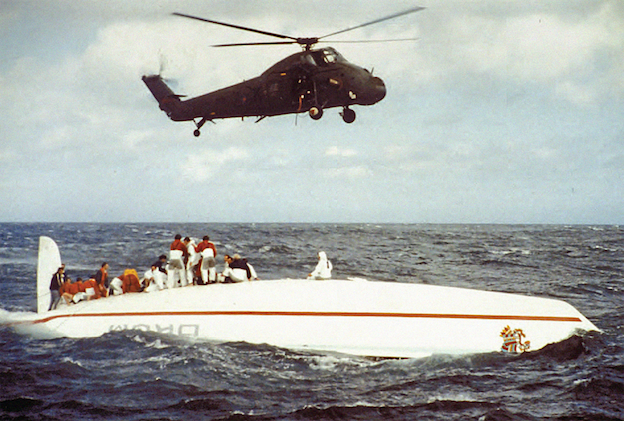Sailing a Rival 34 for our eighth issue made me very tempted to harness the wind and just get on over the horizon. I was instantly attracted to the easy movement and that cushioned sense of suspension – or a lack of heave if you will, that I normally associate with well-designed wooden boats. I have never dissed glassfibre but in youth those kinds of boat were out of reach to a fairly impecunious family man. And so it was wood.
The glassfibre boats I have sailed tended to be lightweight in construction. And at one point I described them as the Beneteau, Jeanneau and the Idontkneau and called them jumpy pieces of French plastic. To be honest I was getting fed up with cooking on them in any kind of weather; the trick with food at sea is to keep it in one place before serving it up. It saves on trouble from the crew, and all that cleaning.
Apart from the Rival 34 we have Federico Nardi in his regular column talking about the Alberg 35 HERE. Carl Alberg trained with the American schooner designer John Alden at the end of the days of sail. He was imbued with a deep respect for the sea and his designs reflected that.
When he was doing some research Federico discovered a lovely piece of commentary from Carl, about the 35 in the 1979 Fastnet. To me it just sums up why we should go to sea in seaworthy boats:
“Contrasted to the modern IOR boats where you have six gorillas sitting on the weather rail with their feet hanging outside trying to keep the boat upright, my boats are strictly family-cruising boats. In all my designs I go for comfortable accommodations and a boat you can sail upright without scaring the life out of your family or friends. I gave them a good long keel, plenty of displacement and beam, and a fair amount of sail area so that they can move.”
“In 1979, while those modern boats were capsizing and sinking, an Alberg 35 on its way to England comfortably lay a-hull. It was really blowing and though they shortened sails and did everything else they could in order to keep going, they eventually took everything off, went below, battened down the hatches and just ate, drank and played cards. When it had blown over they hoisted sail and continued to England, where they were told they had just sailed through the same storm that had taken 18 lives in the Fastnet race. They had ridden out the storm by just sitting in the cabin while everyone else was capsizing.
“There are still some designers around who share my ideas about glass boat design; everyone else is trying to conform to the new rules. My boats are more designed to follow the waves and stay relatively dry and stable.”
It’s a wonderful image of riding out a storm and how a well-found boat really will rock you into a sense of her own security. With enough sea-room it often makes sense in the teeth of weather like that just to give up, and lying a-hull is usually the best way to cope. You don’t have the problems of trailing bits of parachute or gear over the side and the boat will usually swim out of it on her own. You do hear of boats being found afloat long after the crew have abandoned ship. Having more faith in the boat and a good pack of cards is often the best idea.
Image: It wasn’t just capsizing; soon boats’ keels had started to fall off, making them more seaworthy upside down. This was the case with Simon Le Bon’s Drum, above, which lost her keel in the 1985 Fastnet, trapping the Duran Duran lead man in the hull until rescue


